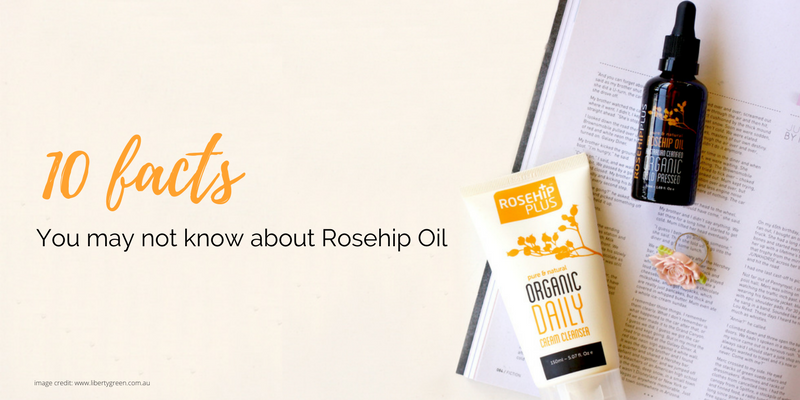

By Chantalle Duffin
Think you know everything there is to know about Rosehip Oil? Test your knowledge with some of these 10 little known facts about Rosehip Oil – and let us know in the comments how many you already knew!
1. Rosehip Oil is extracted from the seeds of the amber berry like fruit of the Rosehip bush that grows wild or is farmed – it does not come from the roses we are most familiar with!
2. It takes approximately 210,000 Rosehip seeds to produce a 30ml bottle of RosehipPLUS® Rosehip Oil – find out more about what makes RosehipPLUS so special here.
3. There are 4 types of Rosehip Oil, and not all are pure 100% natural and Certified Organic. These four types include – Cold Pressed Organic Certified, Cold Pressed, Organic Deodorized and refined.
4. 85% of the world’s Rosehip Oil originates from Chile, Asia, India and South Africa
5. Ideally, Rosehip Oil should be stored in a cool, dark place like a bathroom cupboard below 20 degrees. However, it does not need to be kept in a refrigerator
6. Rosehip Oil is packaged in dark amber coloured glass bottles so that UV rays don’t react with the Oil, which can result in it losing its vital potency.
7. Cold Pressed Rosehip Oil is naturally dark in colour. If the Oil has no colour this usually means that it has been extracted using chemicals. However the colour of Rosehip Oil also varies depending on how it is milled and how the Rosehip seed has been cleaned
8. Too much carotene present in Rosehip Oil is often due to the flesh of the berry not being removed during the extraction. This can result in oil that is more orange in colour and can stain the skin
9. When Rosehip Oil is 100% pure it has a nutty toasty aroma. The grinding process is responsible for the toasty fragrance, caused by the natural friction of the seeds being grounded.
10. One of the most important compounds in Rosehip Oil is Vitamin A (trans-Retinoic Acid or Retinol) in a natural form, without the associated side effects of synthetic Vitamin A
Did you learn a new Rosehip Oil fact? Let us know below!
Image source: www.libertygreen.com.au
| Next post »
One response to “10 Facts You May Not Know about Rosehip Oil”
Leave a Reply

Follow Us On Instagram
No images found!Try some other hashtag or username



I did not know that rosehip oil had carotene in it or the process of crushing the seeds. This is very interesting – thankyou for the information.